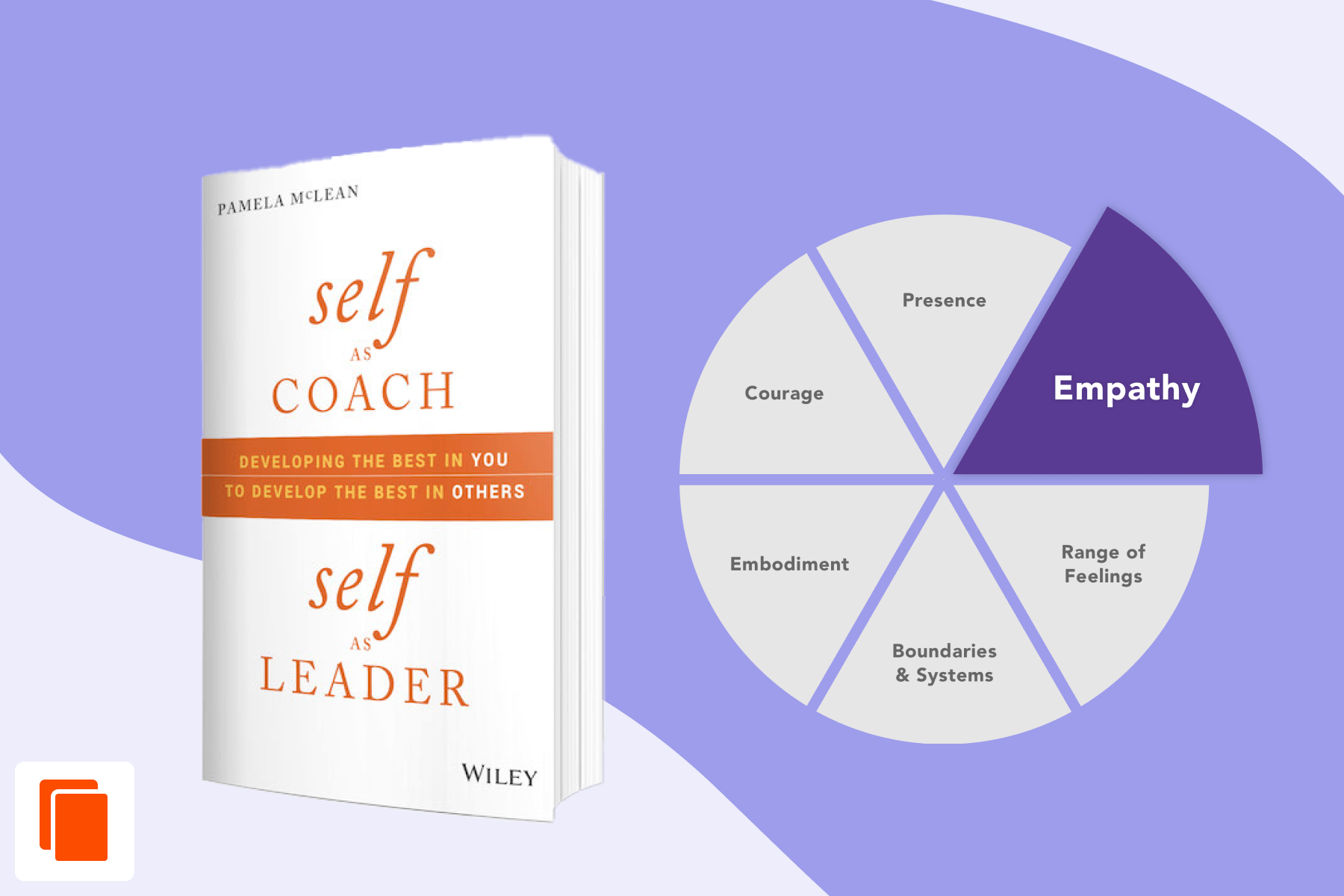Creating Conditions for Breakthrough Moments
Memorable breakthrough moments in coaching don’t just happen, and we surely can’t plan or force them; but we can cultivate the ground for breakthrough experiences by connecting empathically and developing a resonance factor.
Empathy is the glue that makes this highly relational work of coaching possible. The client needs to feel connected and seen by the coach, and the coach needs to feel equally connected. It is inside this relational field that resonance occurs.
Empathic skills are accessible to all of us, and in fact, you likely already use them. For example, through empathy, you notice such things as a silence that holds an important unspoken thought or the meaning behind words and metaphors. These empathic skills allow you to deeply connect with another.
The key in coaching is to understand your comfort zone of empathy, that spot where you find yourself most often. Here’s a way to visualize it: If you plot the general capacity for empathy along a continuum, at the far-left side, empathy is nearly missing. In the center, the calibration is well balanced, and on the far right, there’s an over-abundance of empathy. Where would you place yourself?
The following questions can help you locate yourself along that empathy continuum and identify where you might need to recalibrate in order to create the conditions for breakthrough moments in coaching:
- Do I absorb other’s feelings and find it hard to shake off a sad story a client shared?
- Am I prone to not noticing the emotional terrain of my client?
- Is it possible for me to become more agile?
- What does my resting spot enable and inhibit?
These are important reflections for us as coaches, especially because sharpening our empathic connection is what allows us to create a working alliance to support developmental work. Each of us has our own inclinations based on our histories and stories, and each of our clients elicits different responses and reactions in us. Somewhere in the mix of what we bring as coach and what we choose to respond to in our clients lies the balance of our empathic stance, allowing us to build a strong working alliance.
Aim for the Center
The center portion of the continuum is where we are at our best as coaches — enough, but not too much. When you notice feelings and cues as they arise, honor these with the client, and avoid over-identifying and losing a coaching rudder, you’ll be able to do your best work. At the center, you’ll be able to walk in the client’s shoes without wearing them. You’ll be fully capable of taking the client’s perspective without losing your balance and boundaries.
Here are some tips for helping you stay in the center of the continuum:
Walk in the Shoes of Your Coachee
- Spend time imagining the coachee’s situation from their perspective, not yours
- Spend time seeing the coachee’s responses through their experiences, not yours
Build Your Empathy and Resilience Through Self Care
- Don’t neglect the basics, including adequate sleep, a healthy diet, and wellness routines.
- Spend time “on the balcony,” making it a regular practice to step out of being in your work as coach so that you can look at your work as a coach. This self-observation will allow you to determine where you might recalibrate.
- Deliberately set boundaries and manage any tendency to be a sponge for others’ emotions.
- Find your current version of “best balance,” including how many clients you are able to work with effectively and what the nature of the engagements are (travel time, intensity, duration, etc.).
- Build small practices that support your presence day to day. This may include creating a buffer between clients to take a short walk, doing some deep breathing, or noticing what you need to “put on the shelf” to be at your best.
Gauging, regulating, and calibrating our empathic stance is fundamental in great coaching. Create disciplined practices — solitude time, walking rituals, yoga, meditation, journaling — that cultivate being at your best, and commit to these practices so that the nature of what you do works for you.
The best coaches are leaders. The best leaders are coaches.
Both need to understand organizational systems, the new dynamics of the global marketplace, and the challenges of living in an unpredictable and often volatile world. And that’s just the beginning! Coaches and leaders need to possess the meta-skills that allow them to build strong relationships, inspire others and enter into conversations that require courage and empathy.



![[Video] Authors in the Field Ft. Peter Block](https://hudsoninstitute.com/wp-content/uploads/2025/09/Insight-blog-video-thumbnail-1.png)
